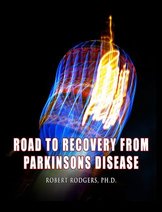X39 Stem Cell Patches
In recent years, stem cell technology has made significant strides, capturing the imagination of both the medical community and the general public. Among the latest innovations in this field are X39 stem cell patches, which promise to revolutionize health and wellness through a novel approach.
What Are X39 Patches?
X39 stem cell patches are a type of wearable technology designed to leverage the body’s natural healing processes. Developed by LifeWave, these patches are infused with specific peptides and bioelectrical signals purported to activate stem cell production and rejuvenate the body’s cells.
Unlike traditional stem cell therapies, which often involve invasive procedures or costly treatments, X39 patches offer a non-invasive and cost-effective alternative. The patches are designed to be worn on the skin, where they interact with the body’s electromagnetic field to promote cellular regeneration and overall wellness.
How Do X39 Patches Work?
The science behind X39 stem cell patches is based on a combination of bioelectrical stimulation and peptide technology. Here’s a simplified breakdown of how they work:
- Bioelectrical Stimulation: The patches are embedded with materials that emit low-level electrical signals. These signals are believed to interact with the body’s own electrical field, potentially stimulating the production and activity of stem cells.
- Peptide Infusion: The patches are also infused with specific peptides, which are short chains of amino acids. These peptides are thought to play a role in cellular communication and repair, potentially enhancing the body’s natural healing processes.
- Wearable Technology: The patches are designed to be applied to specific points on the skin. Once in place, they continuously emit their bioelectrical signals and peptides, promoting a supportive environment for stem cell activation and cellular rejuvenation.
Ian kindly gave me permission to post his experience using the X39 stem cell patches. His report follows.
I have had to 2 large squamous cell carcinomas removed in the past which, unlike others like them, did not respond to a cream I use. One was taken off by a surgeon under an anesthetic where I was conscience but didn’t feel the surgery. Recently another one appeared but this time the cream worked perfectly! I had not long started on the X39 patches at that stage.
I have a dark patch on my face which look a bit like a melanoma which has been shrinking since I started using the X39 patches.
My taste and smell certainly seems to be in proving. I had to go back to an old liquid B complex and found it extremely bad tasting. I always tolerated it well before.
One guy who buys through me as product partner who has been diagnosed with Parkinson’s and Osteoarthritis. He reported that within 15 minutes of putting on the patch he could feel less pain in his left knee and it has continued to improve. He said that his PD has changed with not as much dribbling and a slight improvement in tremors.
Ian
For further information about the X39 stem cell patches visit: X39 Patches
Robert Rodgers PhD
Founder 2004
Parkinsons Recovery




